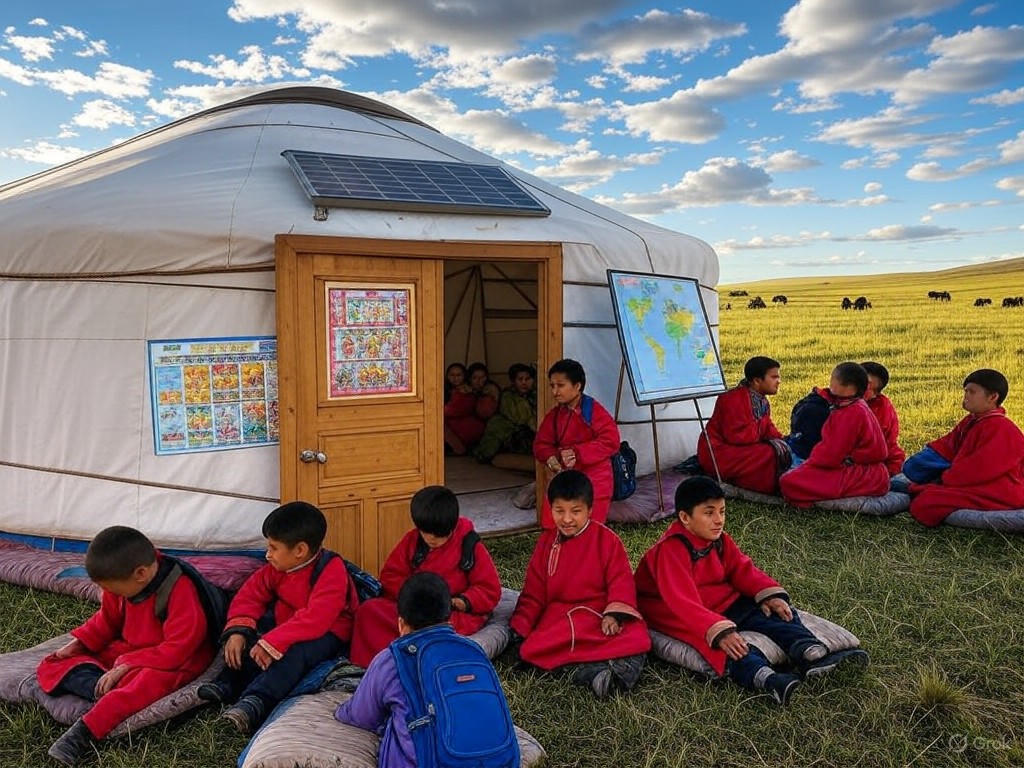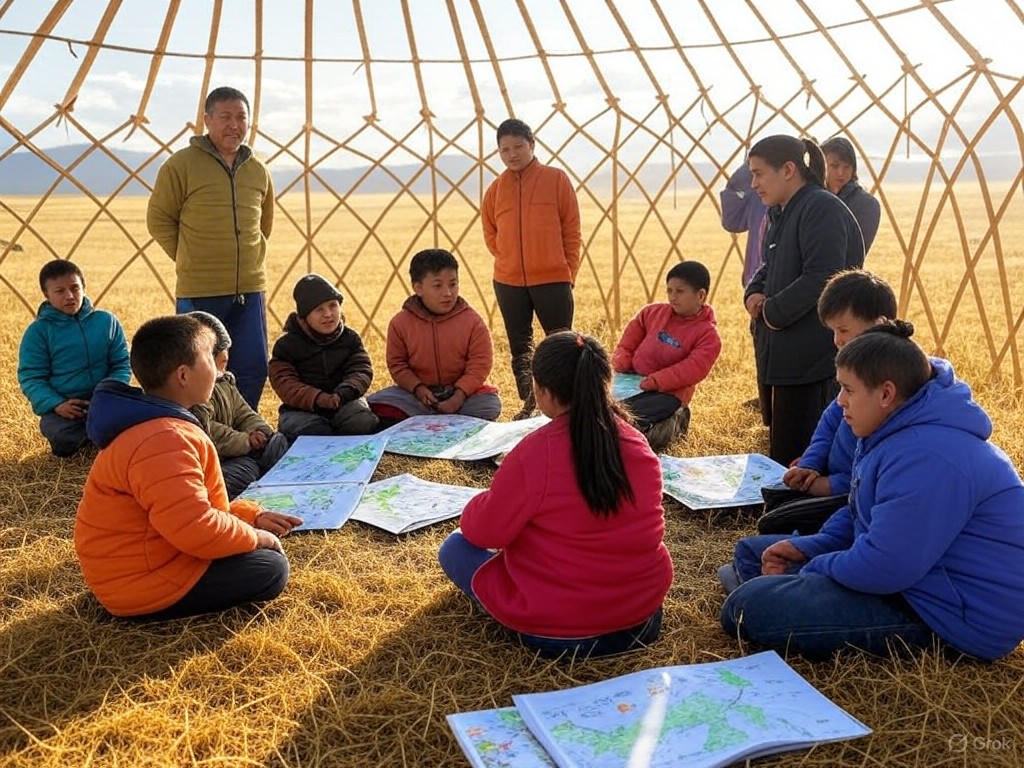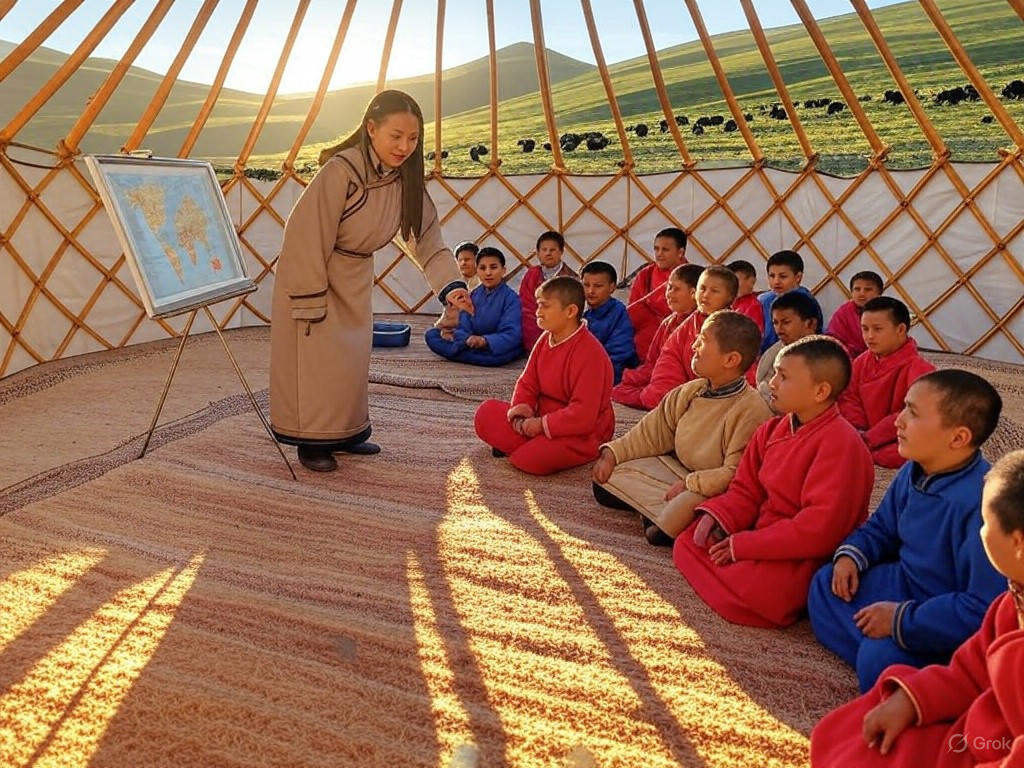Mobile Schools in Mongolia: Nomadic Education
In the vast, windswept expanse of the Mongolian steppe, where the earth stretches like an endless poem under the sky's unblinking gaze, education emerges not as a distant institution but as a wandering companion. Imagine a child of the nomads, herding yaks by day and tracing stars by night, suddenly encountering knowledge in the form of a canvas tent that arrives with the seasons. This is the quiet revolution of mobile schools, a testament to human ingenuity in the face of isolation. Yet, as we reflect on this innovation, we must consider how such efforts honor tradition while fostering individual empowerment, all through the lens of sustainable, market-driven solutions rather than expansive government mandates. In Mongolia, where nomadic life pulses with ancient rhythms, mobile schools offer a beacon of hope, blending education with empowerment in ways that echo the self-reliant spirit of free markets and enduring values.
The Nomadic Challenge: A Landscape of Opportunity and Obstacle
The Mongolian steppes, home to some 300,000 nomadic herders, present a unique tapestry of beauty and hardship. Here, families move with the migrations of livestock, their lives woven into the land's cycles in a dance that predates modern boundaries. Traditional values—rooted in community, resilience, and a deep respect for heritage—form the bedrock of this existence. Yet, for the children of these nomads, access to formal education has long been elusive, with fixed schools often hundreds of miles away. This gap not only hinders personal growth but also perpetuates cycles of economic dependency, underscoring the need for innovative approaches that prioritize individual initiative over centralized intervention.

Children huddle around a solar-powered tablet in a mobile school tent, their faces illuminated by both the digital screen and the golden hues of the setting sun, symbolizing the fusion of ancient nomadic ways with modern learning.
Enter the concept of mobile schools, nimble outposts of knowledge that traverse the terrain alongside the nomads themselves. These schools, often operated through partnerships between local entrepreneurs and non-governmental organizations, deliver education directly to remote areas, using converted vans, yurts, and even horseback deliveries. This model exemplifies a center-right principle: empowering individuals through market-based creativity rather than relying on bloated government programs. By leveraging private funding and community-driven logistics, mobile schools in Mongolia have reached over 50,000 children in the past decade, according to estimates from educational initiatives UNESCO Report on Nomadic Education. This approach not only addresses immediate needs but also instills a sense of personal responsibility, allowing families to maintain their traditional lifestyles while gaining the tools for economic mobility.
Analyzing Innovation: Free-Market Roots of Educational Empowerment
At the heart of Mongolia's mobile schools lies a profound lesson in empowerment. Education, in this context, is not merely a handout but a catalyst for self-reliance, echoing the free-market ethos that values innovation over regulation. These programs often begin with local entrepreneurs who identify gaps in service and collaborate with international donors, creating a ecosystem where supply meets demand organically. For instance, mobile schools incorporate curricula tailored to nomadic life, teaching practical skills like sustainable herding alongside core subjects, thus preserving cultural heritage while preparing children for a global economy. This balance is crucial: in a world of rapid change, traditional values such as family loyalty and environmental stewardship must not be eroded but enhanced through education.
From a center-right perspective, the success of these initiatives highlights the pitfalls of excessive government involvement. While some advocate for nationwide schooling mandates, such policies can lead to inefficiencies and cultural dislocation, as seen in other regions where top-down reforms have disrupted community structures. Instead, mobile schools thrive on limited government roles—perhaps through tax incentives for private providers—allowing market forces to drive quality and accessibility. A Wall Street Journal analysis of similar programs notes that privately backed mobile education models in developing nations have improved literacy rates by up to 30% without the bureaucratic overhead of state-run systems. This underscores a fundamental truth: when individuals and communities are empowered to solve their own problems, the results are more enduring and respectful of tradition.
Yet, challenges persist. Nomadic children often face interruptions due to seasonal migrations, and the digital divide remains a barrier in areas without reliable internet. Here, innovation steps in: many mobile schools now integrate solar-powered devices and satellite connectivity, funded through micro-donations and corporate partnerships. This market-oriented adaptability not only sustains the programs but also fosters a culture of entrepreneurship among participants. As one educator involved in these efforts shared in a Brookings Institution blog post, "Empowerment begins with access, but it flourishes through choice—allowing nomads to weave education into their own narratives."
Evidence of Impact: Stories and Statistics from the Field
The evidence for mobile schools' effectiveness is both narrative and numerical, painting a vivid picture of transformation. In the Gobi Desert region, for example, a pilot program launched in 2018 has seen enrollment rates among nomadic children rise from 40% to over 70%, as reported in a World Bank study on rural education. These schools, equipped with portable libraries and interactive lessons, have empowered students to pursue vocations that blend their heritage with new opportunities—such as eco-tourism or digital herding apps. One poignant story involves a young girl named Bat-Erdene, who, through mobile school sessions, learned basic coding skills that allowed her family to optimize their livestock routes, boosting their income by 25%. Such outcomes illustrate how education can be a bridge to economic independence, rooted in personal effort rather than state dependency.
Quantitative data further bolsters this case. A longitudinal study by the Asian Development Bank ADB Report on Mobile Education found that participants in mobile programs exhibit higher rates of secondary education completion and lower dropout rates compared to traditional models. This success is attributed to the schools' flexibility, which aligns with nomadic schedules, and their emphasis on practical empowerment—teaching children not just facts, but skills for self-sustenance. Moreover, by avoiding the pitfalls of over-regulation, these initiatives promote a merit-based system where success is tied to individual and community initiative.

A Mongolian family sits in a circle with a mobile school teacher under the open sky, sharing stories of heritage while exploring maps on a rugged tablet, embodying the harmonious blend of tradition and progress.
Critics might argue that such programs require initial investment, potentially from government sources, but from a center-right viewpoint, this is best achieved through public-private partnerships that minimize fiscal burdens. The key is sustainability: mobile schools in Mongolia have already attracted private funding from tech firms like Huawei, which see long-term value in cultivating a skilled workforce. This model not only ensures viability but also reinforces the idea that education is an investment in human capital, driven by market incentives rather than mandates.
A Reflective Path Forward: Honoring Roots While Embracing Horizons
As we conclude this journey across the Mongolian plains, let us pause and reflect on the deeper poetry of progress. Mobile schools represent more than an educational fix; they are a metaphor for the human spirit's resilience, where ancient nomadism meets modern empowerment. By championing free-market solutions and limited government intervention, these initiatives preserve traditional values while opening doors to opportunity, ensuring that children like those in Mongolia can chart their own courses without losing sight of their heritage.
In a world quick to impose solutions, the quiet success of mobile schools reminds us that true empowerment comes from within—from communities that innovate for themselves. As we look to the horizon, may this model inspire similar efforts elsewhere, fostering a global tapestry where education empowers, not overwhelms. For in the end, as the winds of the steppe whisper through the tents of learning, we find not just knowledge, but the enduring strength of the human will.

